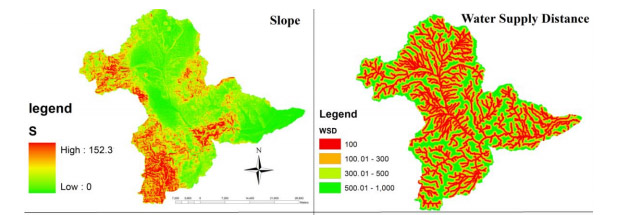A Grazing Capacity Model with Fuzzy Inference System in Semi-steppe Rangelands
Main Article Content
Abstract
This paper explains a fuzzy-rule approach to spatial modeling of grazing capacity in semi-steppe rangelands. Using Mamdani-type of inference of fuzzy approach, we develop a simple model based on data’s that could be easily earned as easily as possible such as slope, forage production, water supply distances and soil resistance to erosion in order to determine grazing capacity. A dataset of a rangeland in North-western Iran was used to check the generalization capability of the Mamdani model: the grazing capacity derived from the Mamdani-type inference was compared with traditional grazing capacity measured for these rangelands. Sensitivity analysis showed that slope was the most important factor followed by forage production and soil resistance to erosion and water supply distances respectively. The RMSE and correlation coefficient of Mamdani model were minimized by 0.68 and 0.61, respectively. The results confirm the generalization capability of methods for the modeling of cattle grazing capacity.
Article Details
How to Cite
Goharnejad, A., Zare, A., Tahmasebi, P., Asadi, E., & Ebrahimi, A. (2015). A Grazing Capacity Model with Fuzzy Inference System in Semi-steppe Rangelands. Environment and Natural Resources Journal, 13(2), 1–13. Retrieved from https://ph02.tci-thaijo.org/index.php/ennrj/article/view/70293
Section
Original Research Articles
Published articles are under the copyright of the Environment and Natural Resources Journal effective when the article is accepted for publication thus granting Environment and Natural Resources Journal all rights for the work so that both parties may be protected from the consequences of unauthorized use. Partially or totally publication of an article elsewhere is possible only after the consent from the editors.
